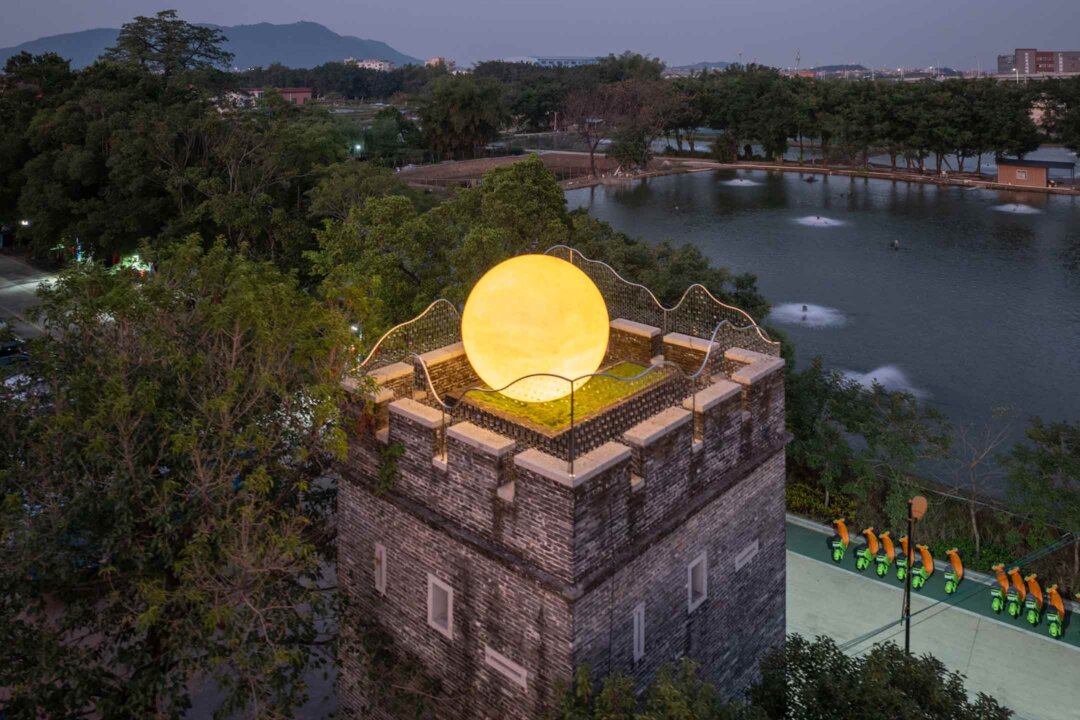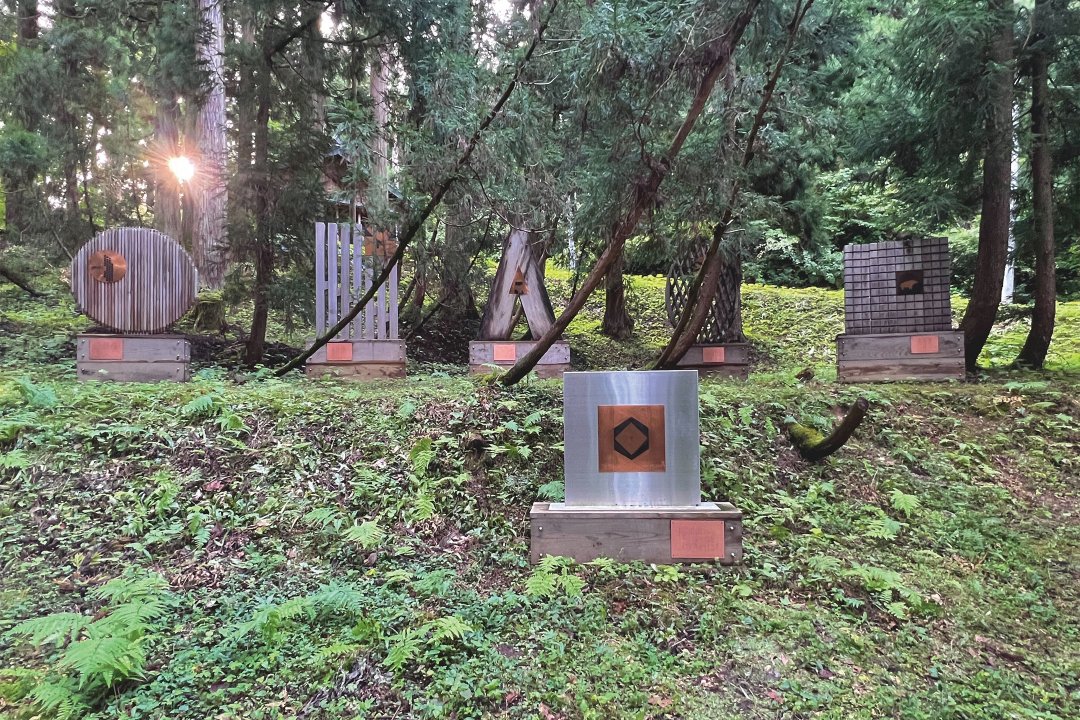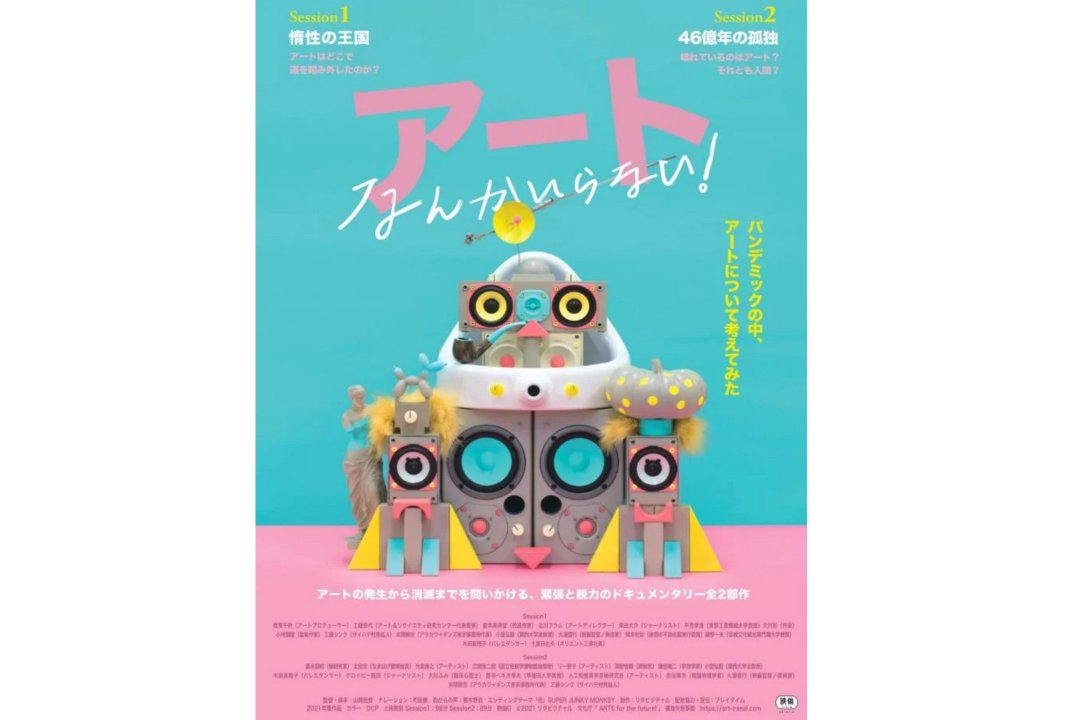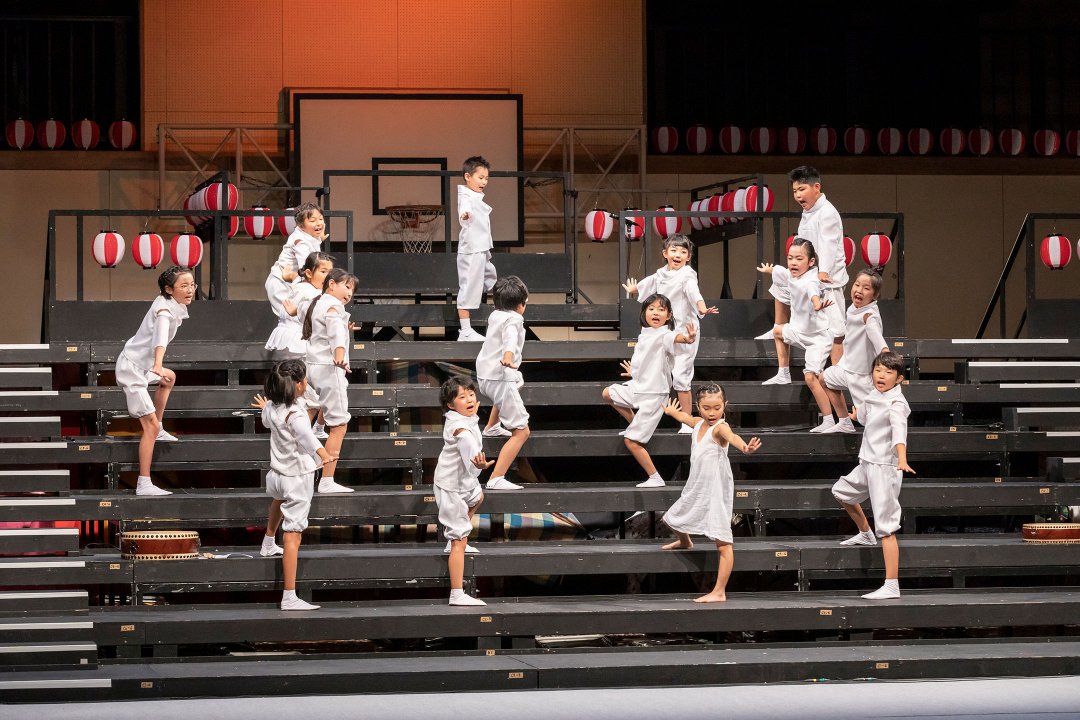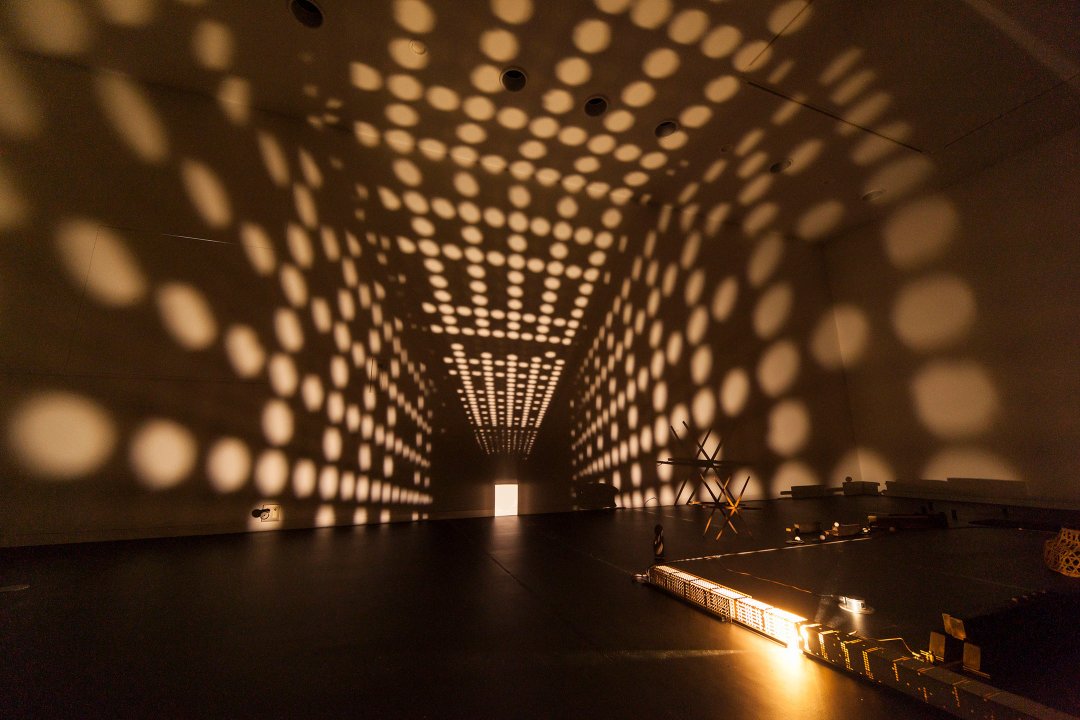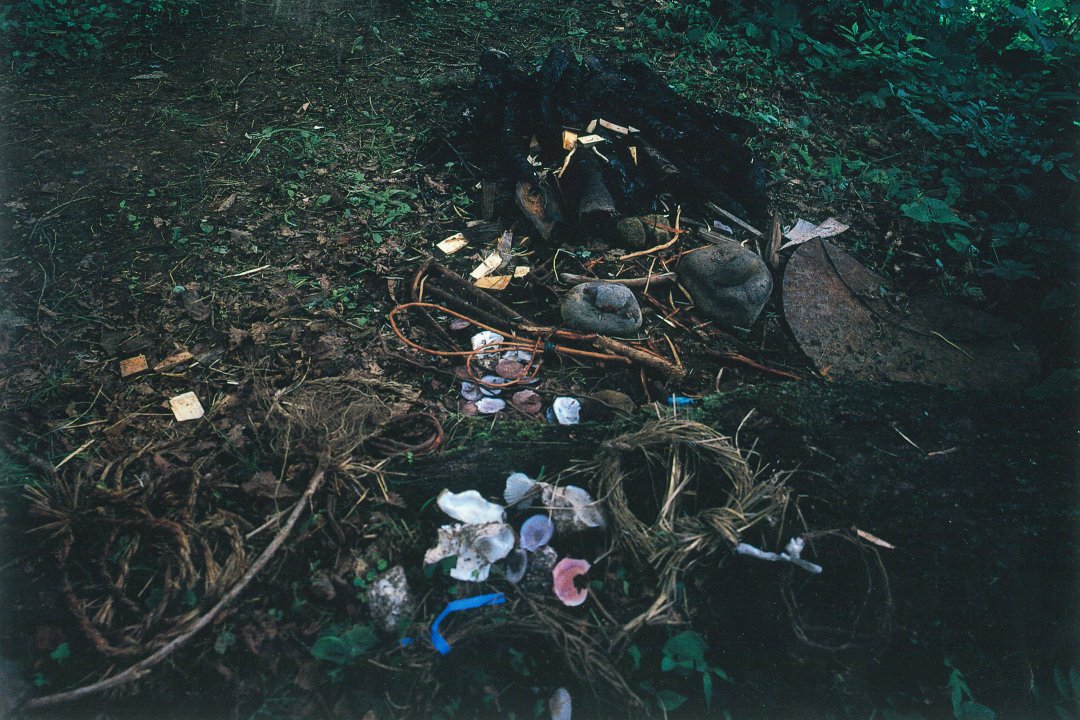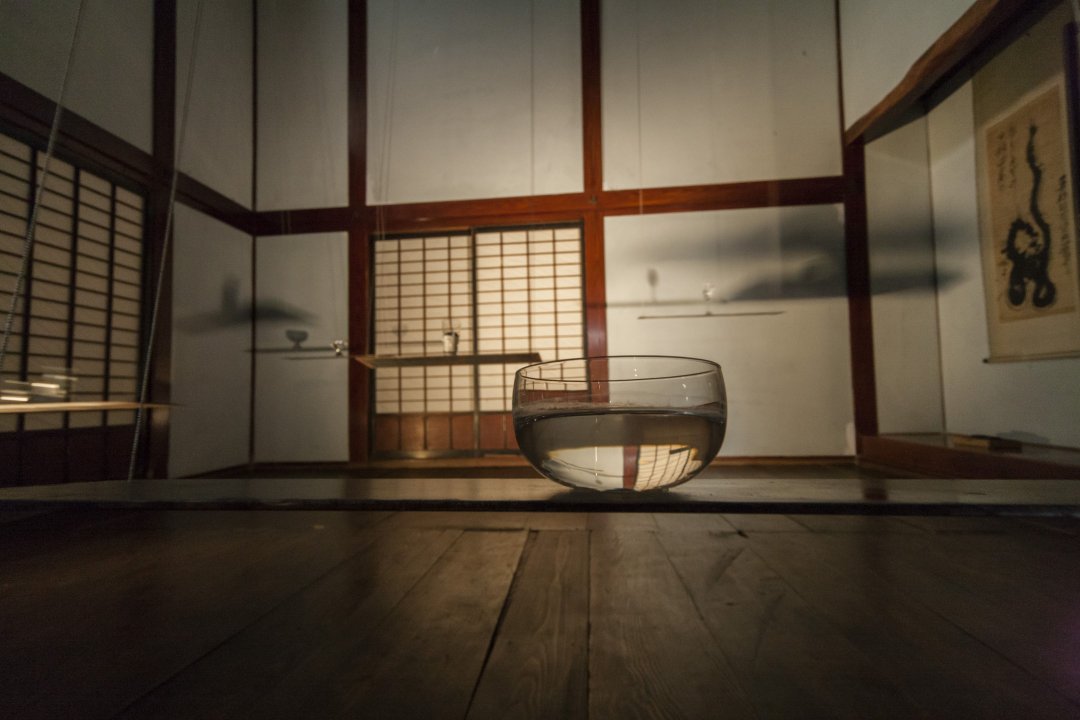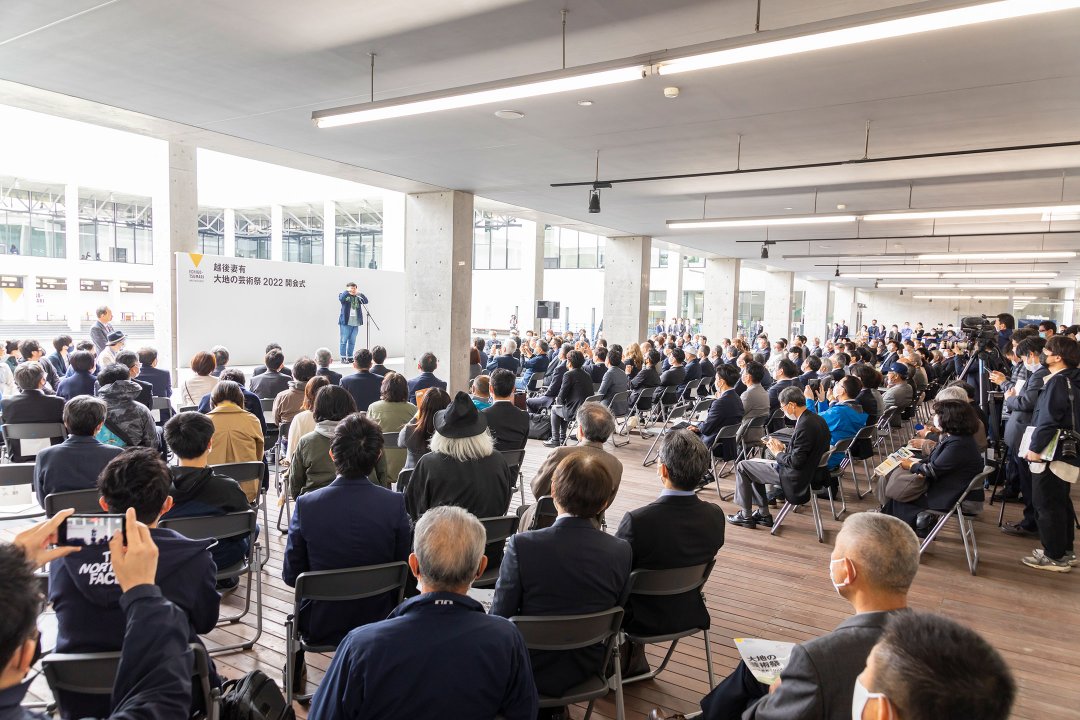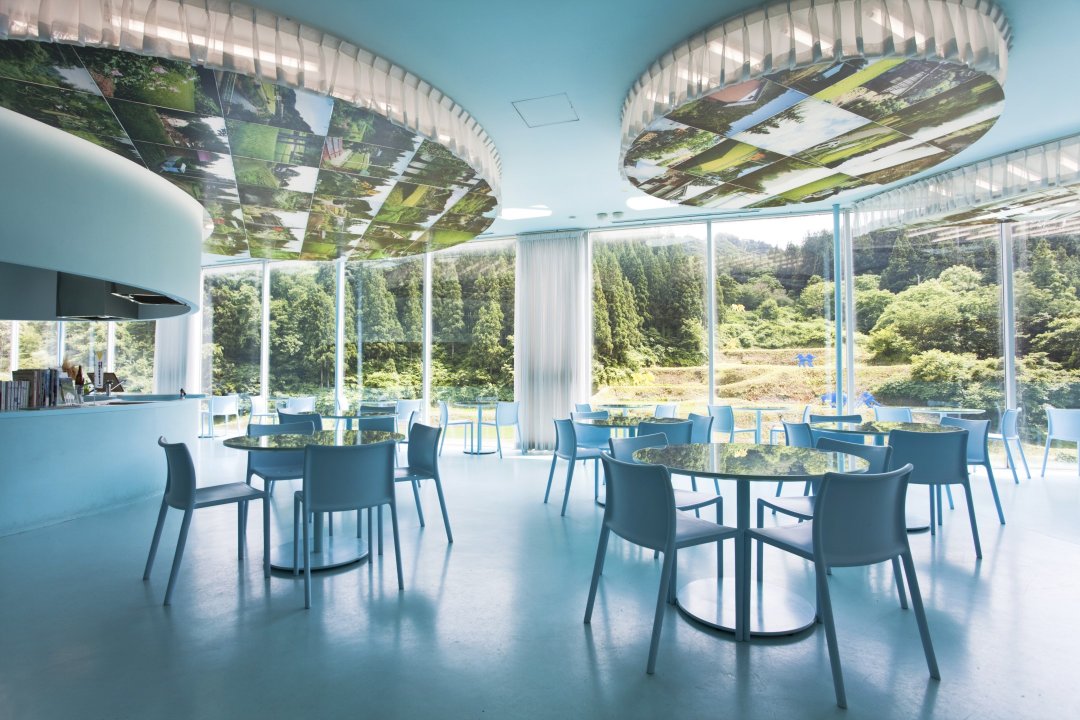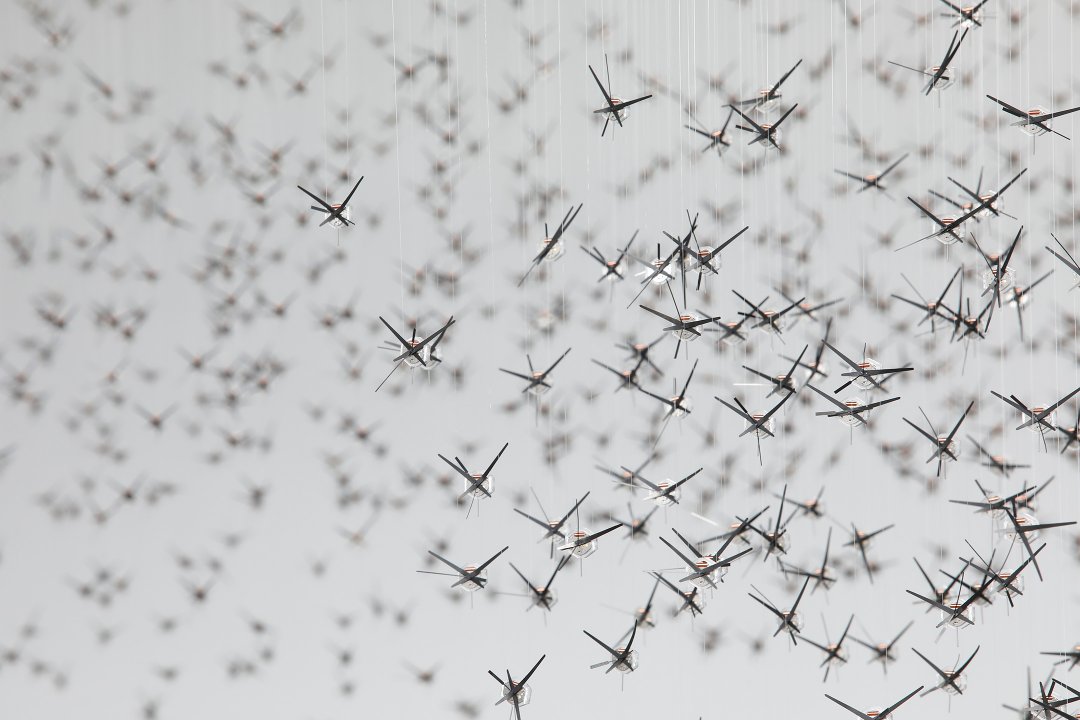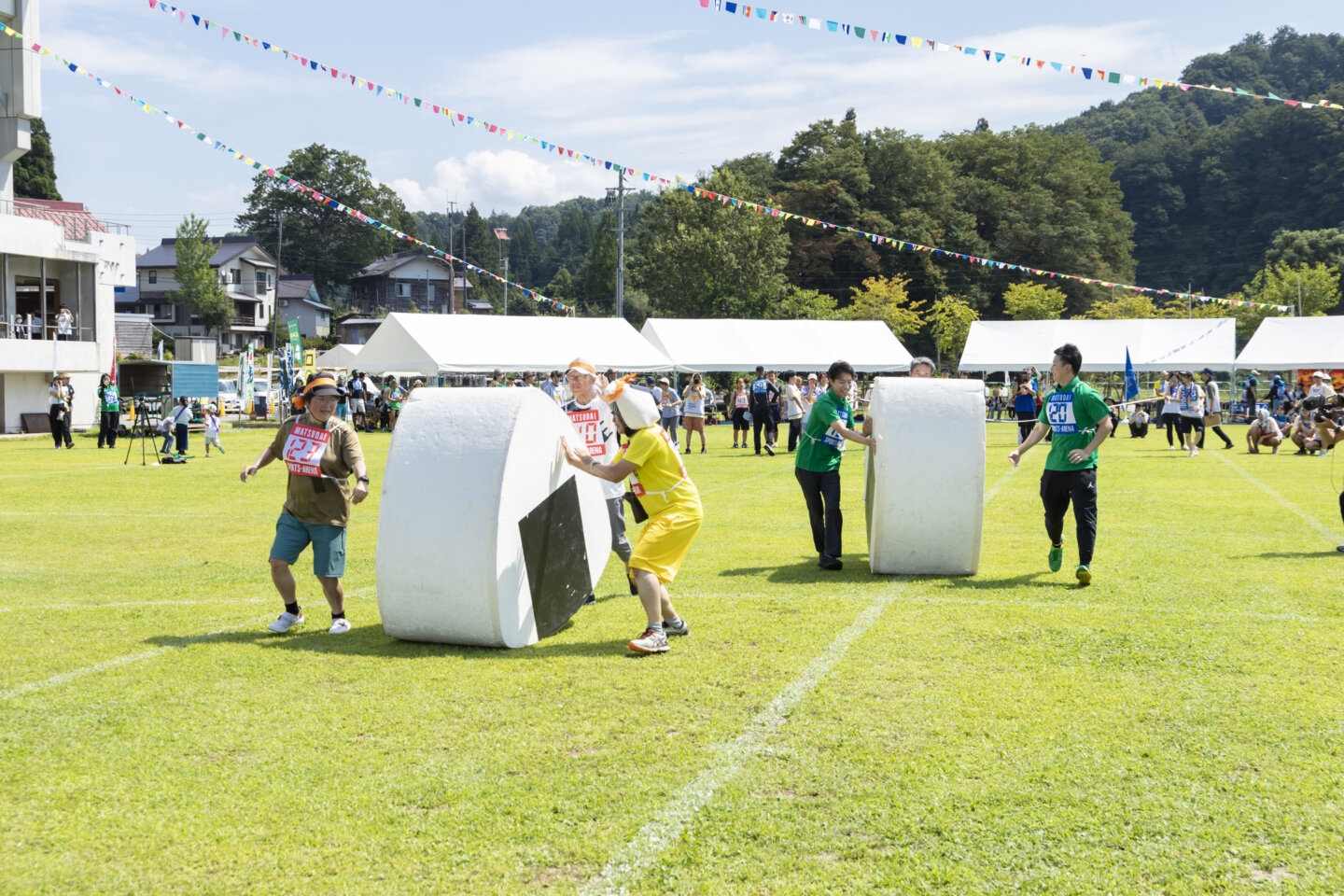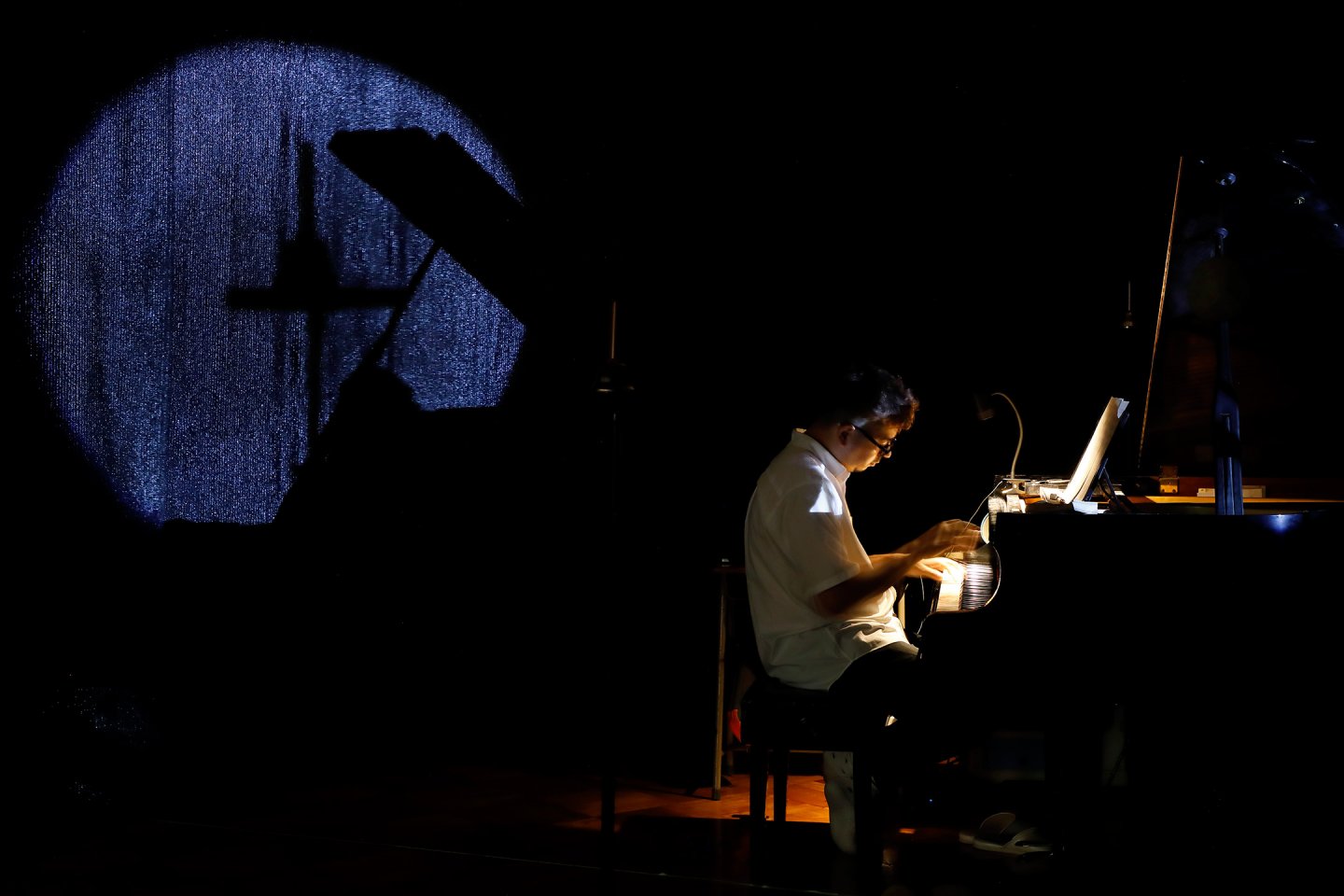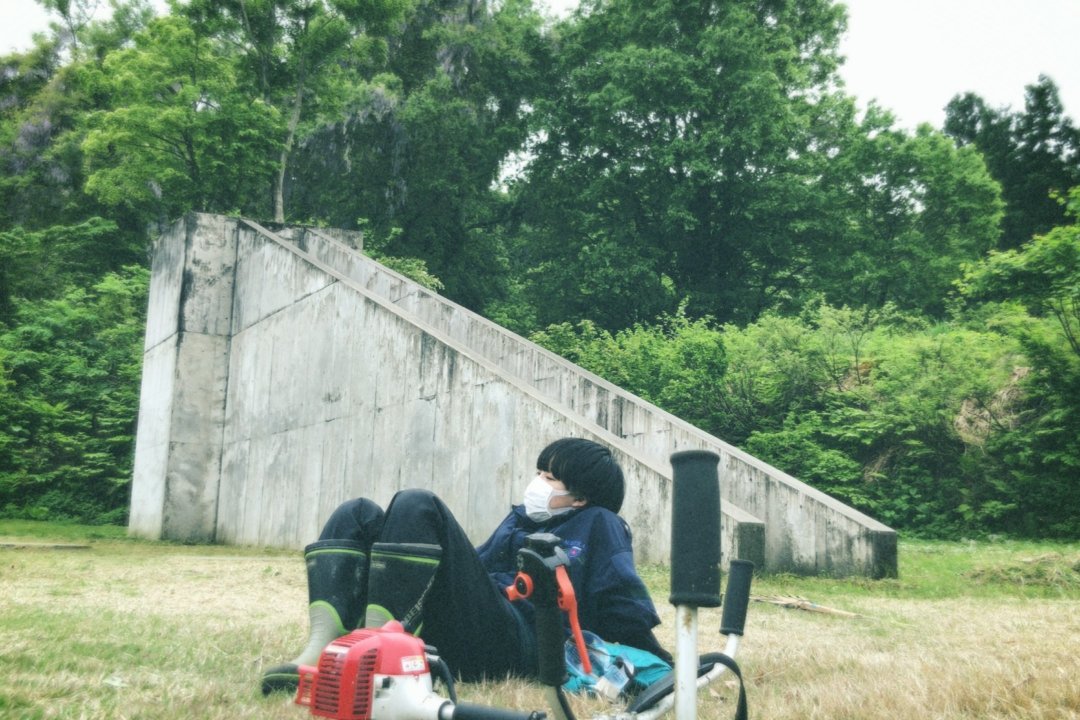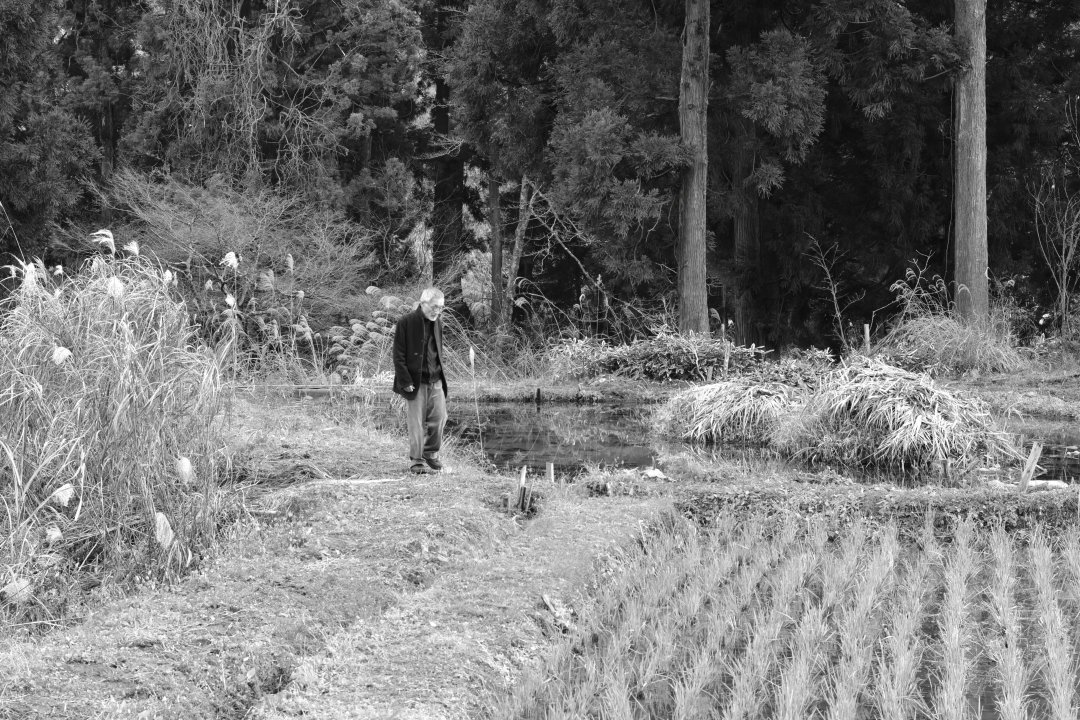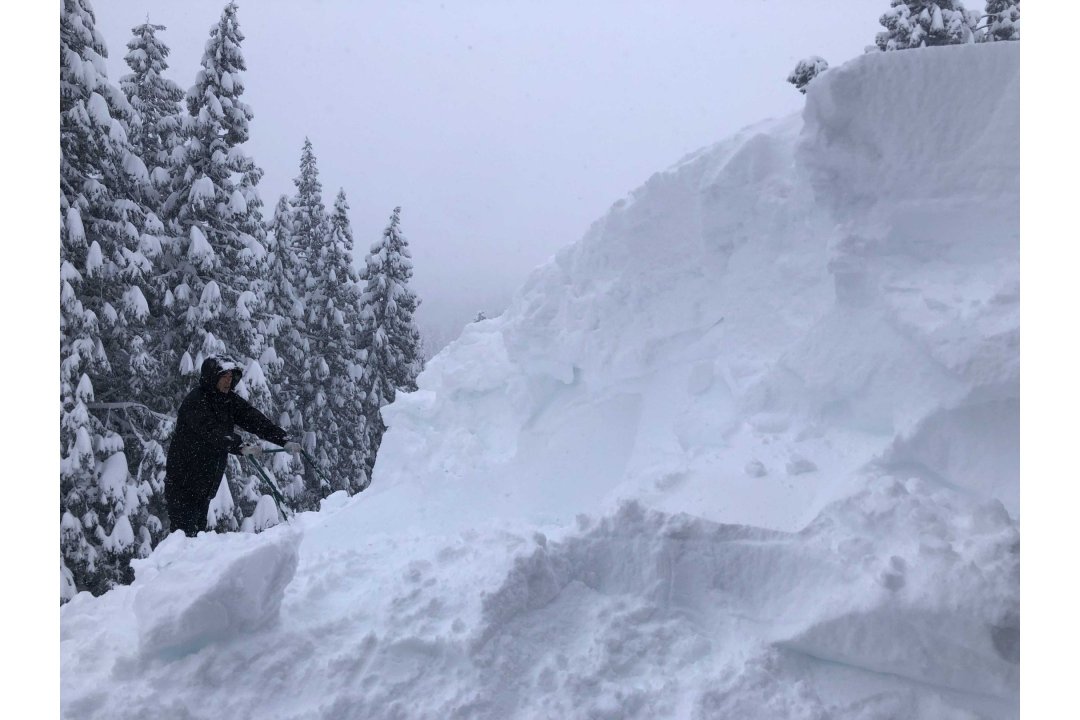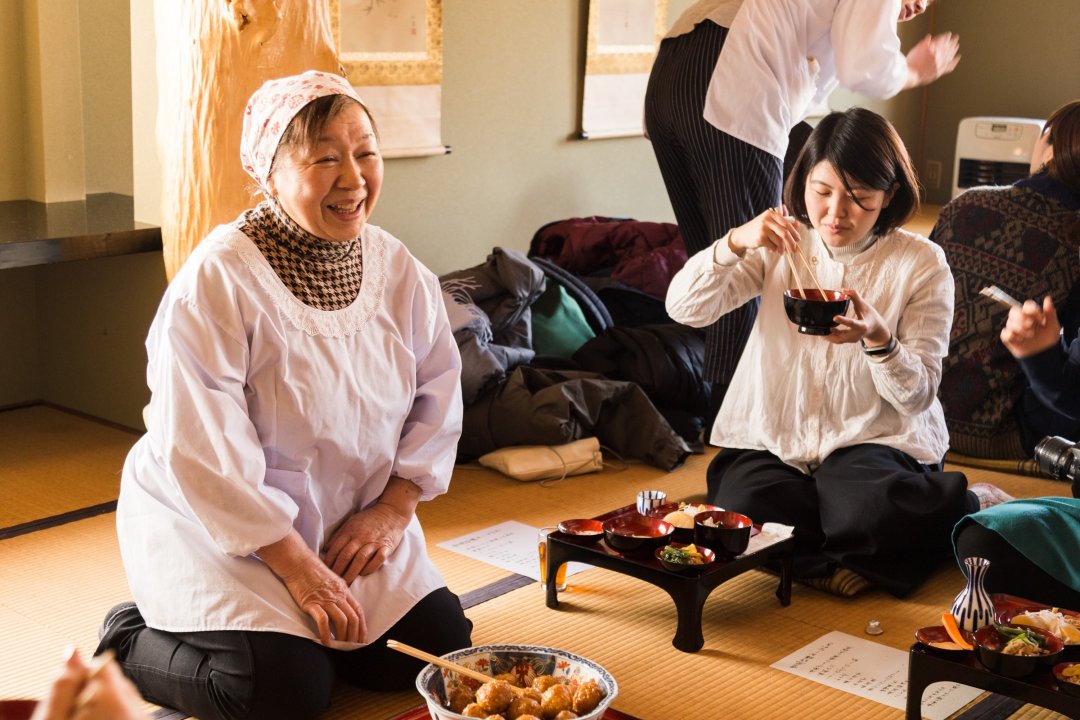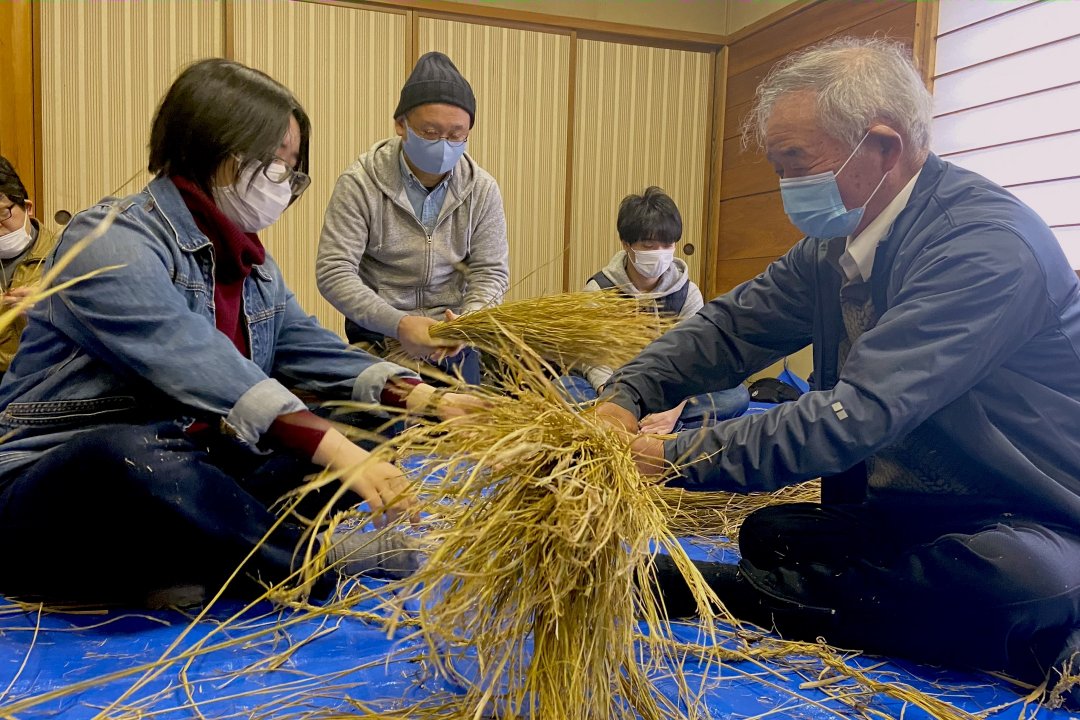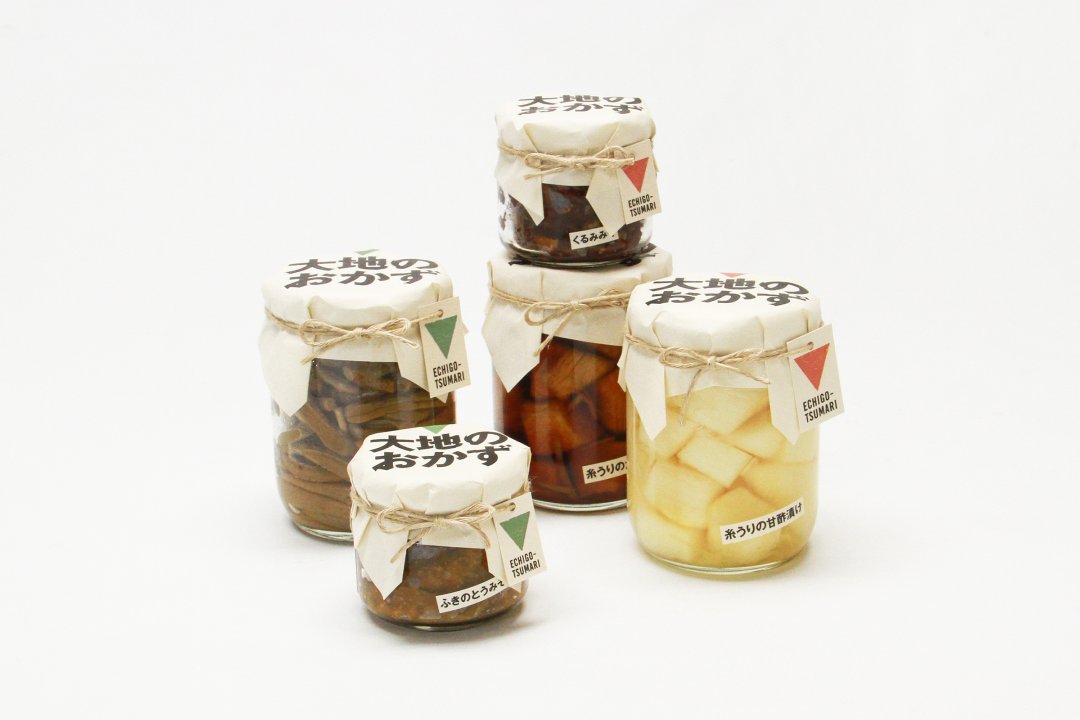Thinking 21st century art in the world from Niigata
Echigo-Tsumari Art Field - Official Web Magazine
Feature / VISITING ECHIGO-TSUMARI WITH HIM, VOL.1-2
Yuta Orisaka’s “nostalgic journey”. Talking about an intense experience at “The Last Class”
Visit “ETAT” with Yuta Orisaka
A journey to Echigo-Tsumari with Yuta Orisaka, a singer song writer continues. In the first series of this interview, we visited “House of Light”, the artwork which roof opens up to show the blue sky, “Ubusuna House” where you can taste local cuisne and enjoy potteries in the thatched roof house. In this interview, he revisited artworks from the previous visit to Echigo-Tsumari he made almost ten years ago before he started his career as a musician that had strong influence on his music. We have found a clue for the reasons why explores visit ETAT.
Text by NAKAJIMA Haruya / Photo by TOYOSHIMA Nozomu / Edit by UCHIDA Shinichi, MIYAHARA Tomoyuki (CINRA.NET editorial team) / Translated by Miwa Worrall
20 November 2019
< Continue to Prequel >
Yuta Orisaka ( Prequel )
Strength in “Locality” and “Tradition” – what Yuta Orisaka treasures
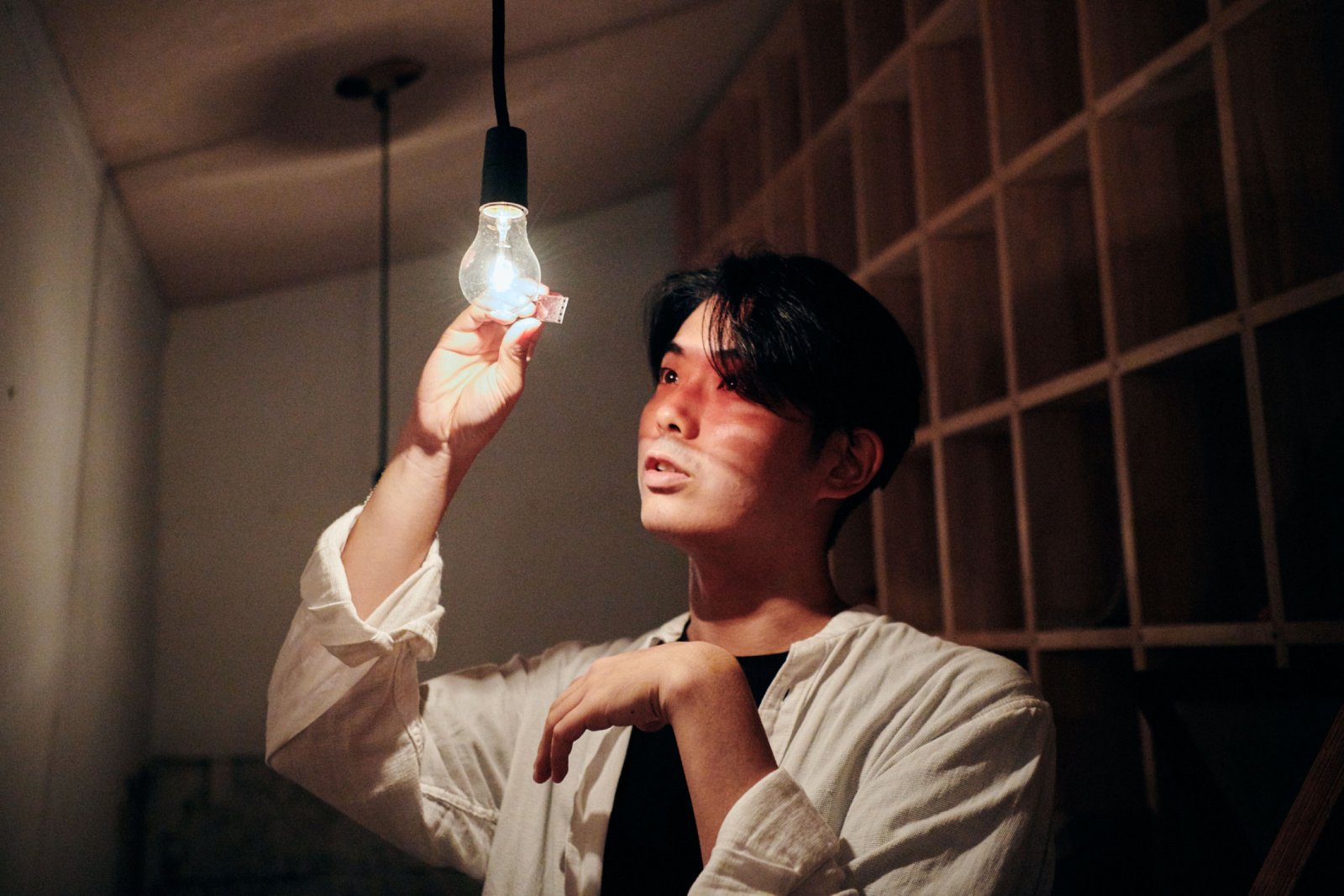
“The Last Class” where an unknown place refects yourself.
As you visit “The Last Class” by Christian Boltanski and Jean Kalman, a large sclae installation in the closed elementary school, the first space you walk into is a gymnasium with straws on the floor and benches and fans scattered around in the space which are dimmly-lit by bare light bulbs. “What impressed me most in the previous visit was this artwork”, Orisaka tried to recall his memory.
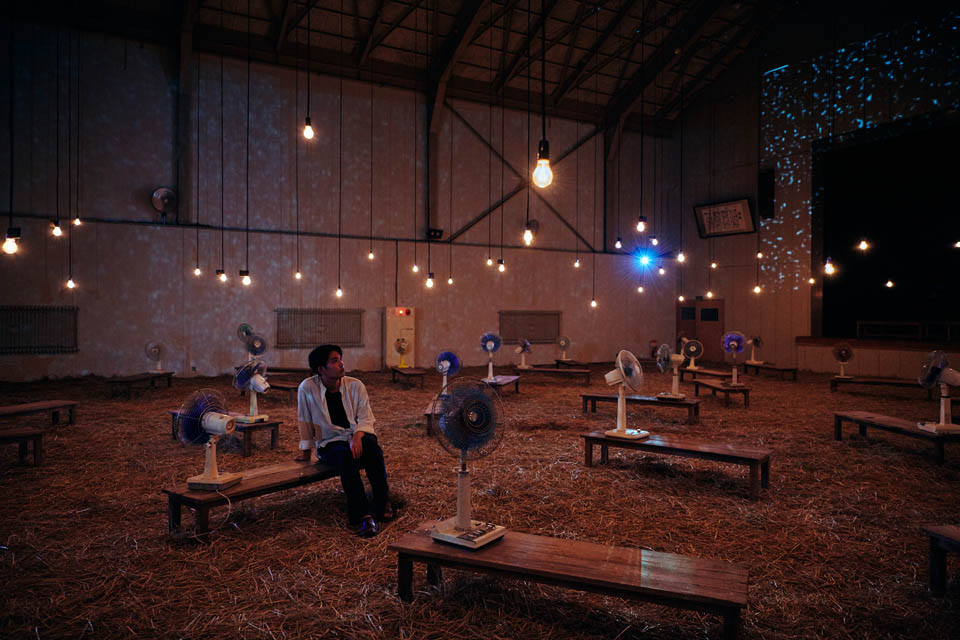
“The Last Class” by Christian Boltanski and Jean Kalman
“The Last Class” by Christian Boltanski and Jean Kalman (2006)
Boltanski creates artworks under the theme of death and life and memories of humans. He presented an installation on the same site in 2003. He came to the site for an inspection in preparation for the artwork during the winter of 2006 when the region had a record-breaking amount of snowfall. He saw the school closed and comletely burried under the snow – a totally different scene from the summer. The artwork born from this site visit became the one which firmly sealed the memoris of the place into the buldling.
“The Last Class” – Echigo-Tsumari Art Field
Please check the official website for opening period, hours and access prior to your visit.
Orisaka: Now I remember. I went to “a free school” since I was around ten years old. We made theatre pieces every year. I was acting in these plays when I was small but from some point onward, I wrote scripts and casted younger students.
One of the stories I wrote was about a man who made artificial satellite in the deep mountainous village. One day his sister visited him and they discussed. The rocket was launched in the end. The setting of“something unusual in the village” in this story must have been an influence of what I saw through this artwork.
It is surprising to hear that the experience of this art festival contributed to your theatrical piece.
Let’s walk deeper inside. As we walked through a corridor with number of framed black glass which looked like portraites painted black and climbed up stiarcases, we reached at a science room where light bulb switched on and off in accordance with the sound of a heart-beat resonating in the space.
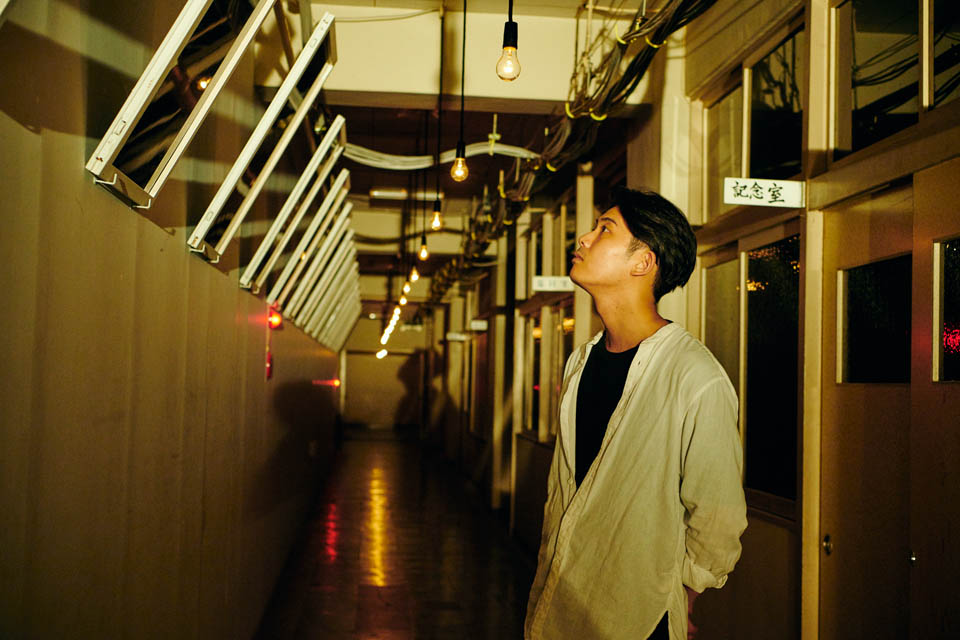
Number of frames looked like portraites and ceremonial photographs in the corridor were actually all black glasses.
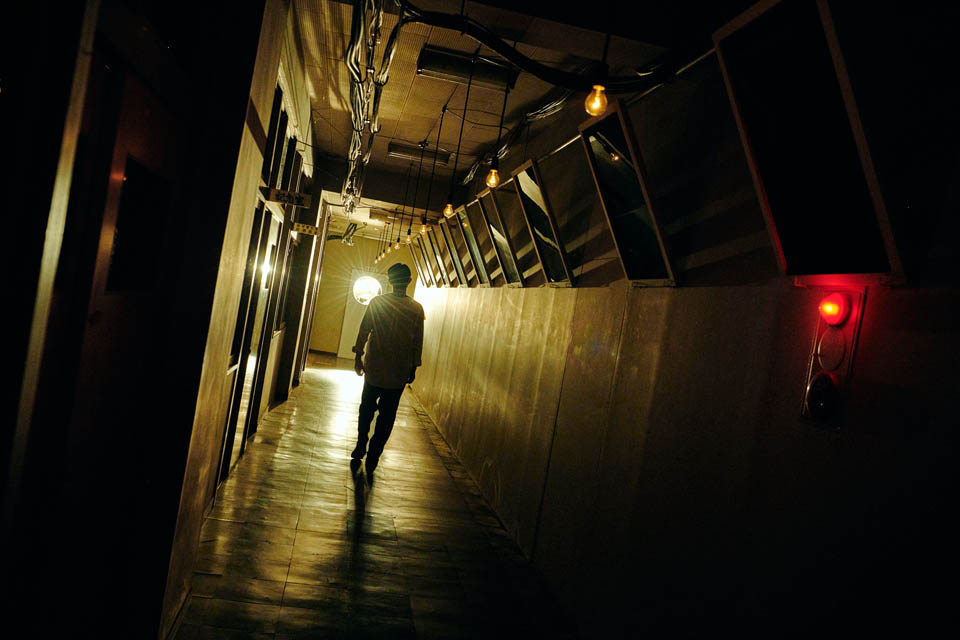
You will begin to hear “dong, dong”, the sound of heart beat from somewhere.
In the music room you will find objects in the sheves that carried memories of this elementary school.
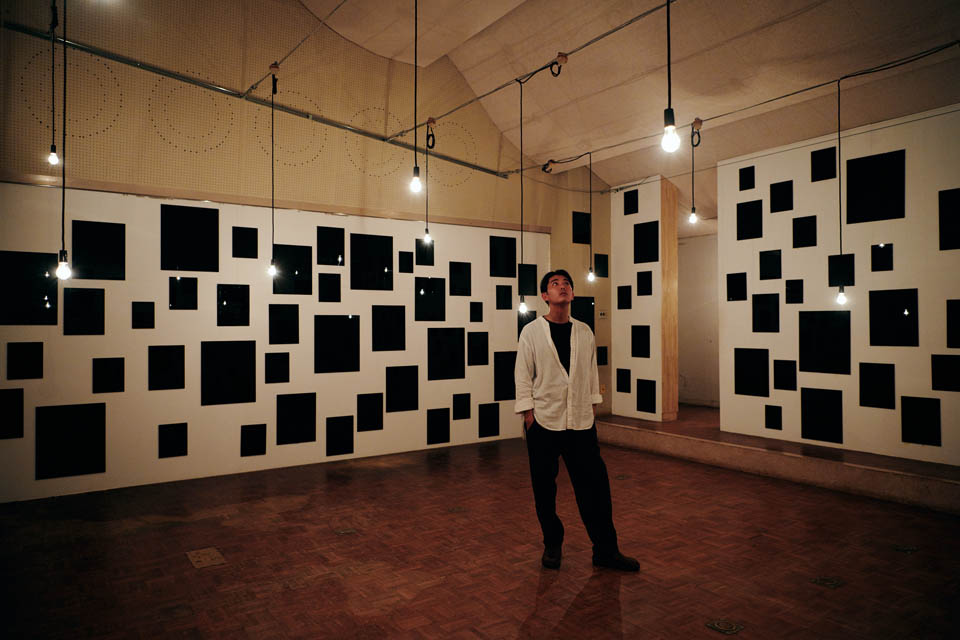
The music room. Black glass in different sizes are hanging on the wall, resembring countless memories of the school.
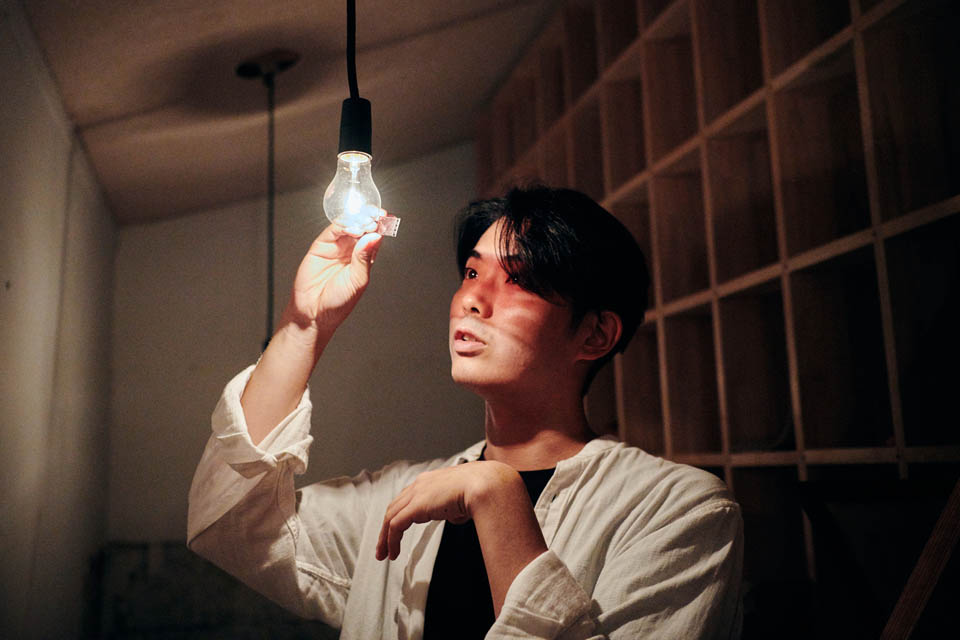
There are lots of things left in the shelves of the music room. Orisaka found an old film and looked it through light.
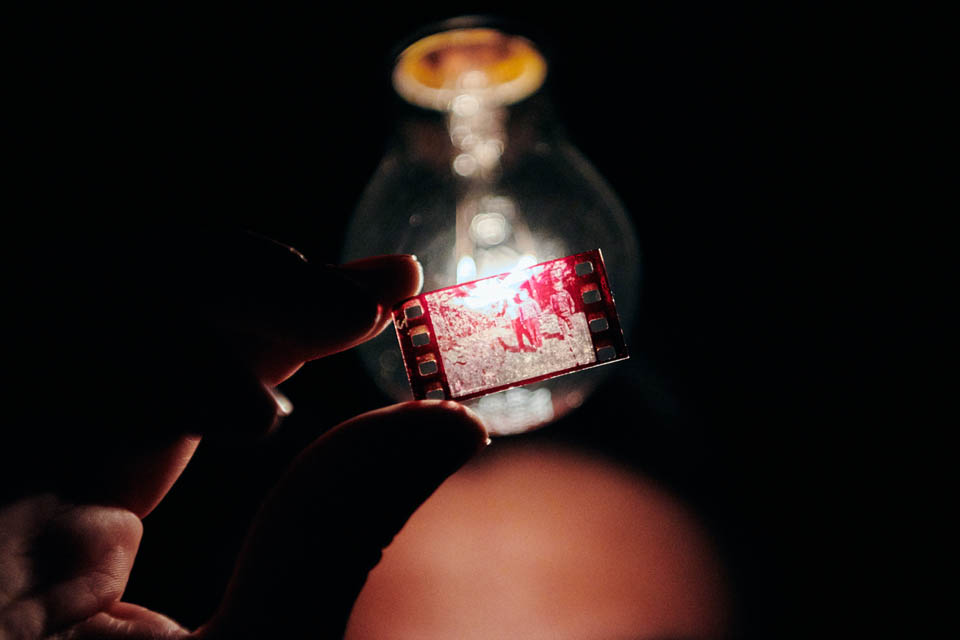
He saw small children in the film. “they may well be students who came to the school in the past.”
As he walked up one more level, he saw class rooms covered with white clothes – an overwhelming installation capturing memories of the place and absence of humans.

The classroom on the top level are covered by pure white cloths as if to wrap something important. (photo by Keizo Kioku)
“First of all, the bulding itself has strong presence.I can’t imagine if museum could do the same.” Orisaka started to articulate his impressions after ten years.
Orisaka: I was taken by “the smell” of straws. You wouldn’t normally associate a school with smell of straw. While it is not a smell you are familiar with, you would feel something like “nostalgia for someone”. Although I was not a student of this school myself, it became a caliber to recall my memories and unconscious minds.
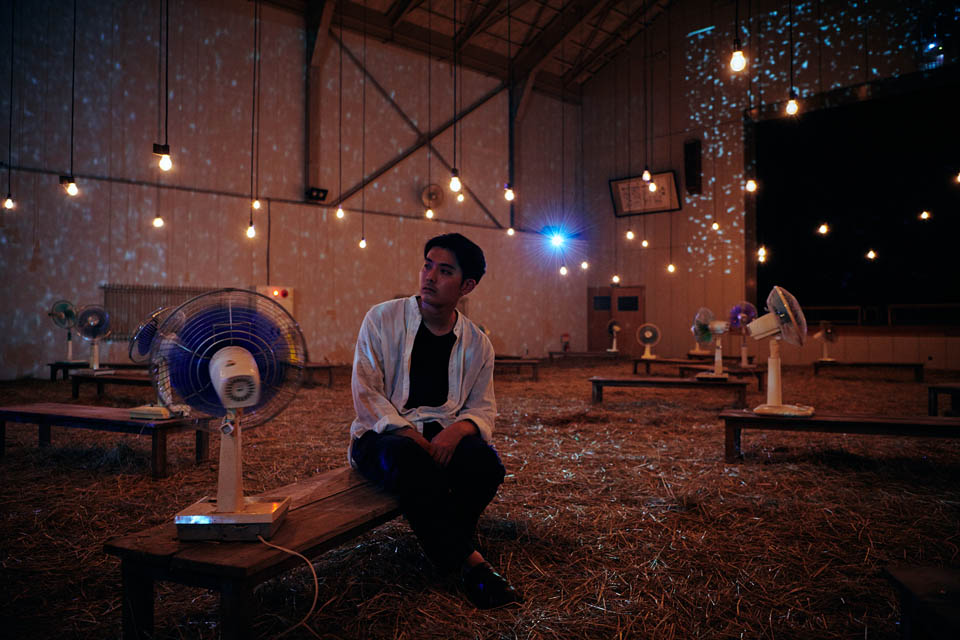
Orisaka: The meaning of the black glass reflecting nothing paradoxically becomes like a mirror projecting onself in a place with stronger sense of locality. The more details it holds such as this community and the elementary school, the place turns into something uninvated.
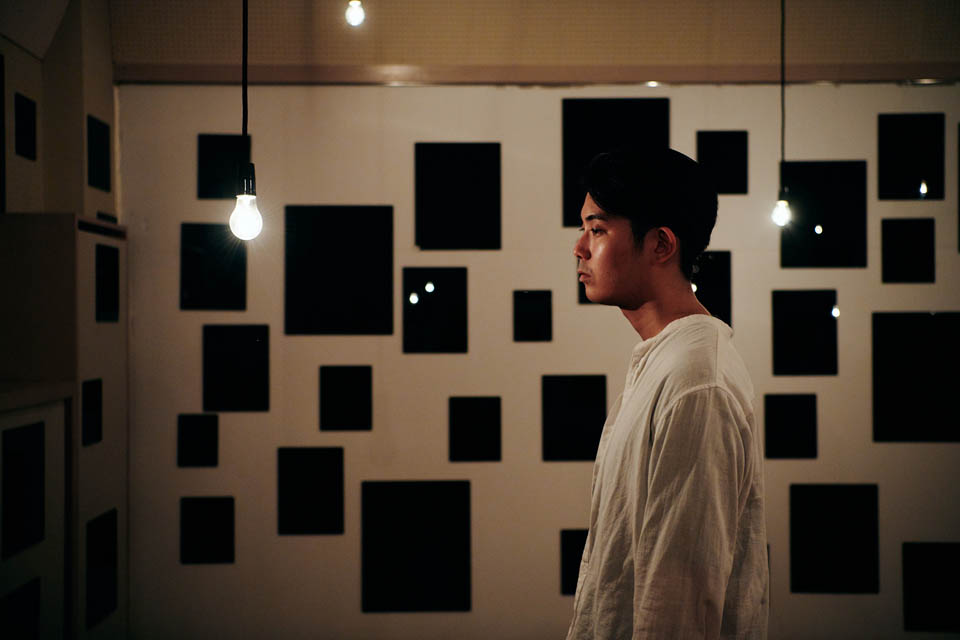
Orisaka continued by referring to the field he operantes, the music.
Orisaka: It often happens in the music, too. When listening to American music and you hear the name of place such as Tennessee, you feel nostalgic even you have never been there. You are reminded of an old memory from the place featured in a film that you don’t know. Such sense must be important in various expressions.
When I saw “The Last Class” for the first time, I found the expression was rather unique and I even felt scared. However, as I continued to look at the work, I was struck by the sense that the scene I saw in far distance felt somewhat so close to where I stood.
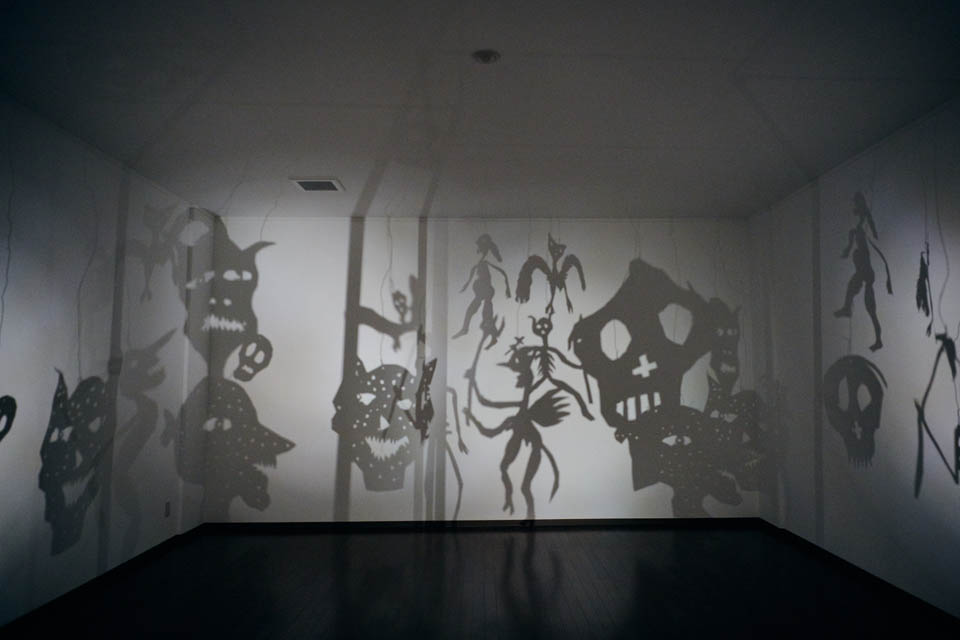
“Théâtre d’ombres (Theatre of Shadows)” a new installation by Christian Boltanski (2018) in the same school building.
Orisaka was impressed when found out that the graduates of the school manage this facility. “That is so significant. I can see the work has truly integrated into the community.”
Orisaka: I feel that the place where the actual elementary school stood in the past and “The Last Class” are well tuned. The school stands in the corner of the nature of the landscape of Echigo-Tsumari and you will find the artwork as you walk into the building. How can I describe? “the perfect encounter”. That is why the message of the artwork reaches to our heart as it is.
“For Lots of Lost Windows” – artwork connecting all
The last artwork he visited was “For Lots of Lost Windows” by Akiko Utsumi, an iconic artwork of ETAT.
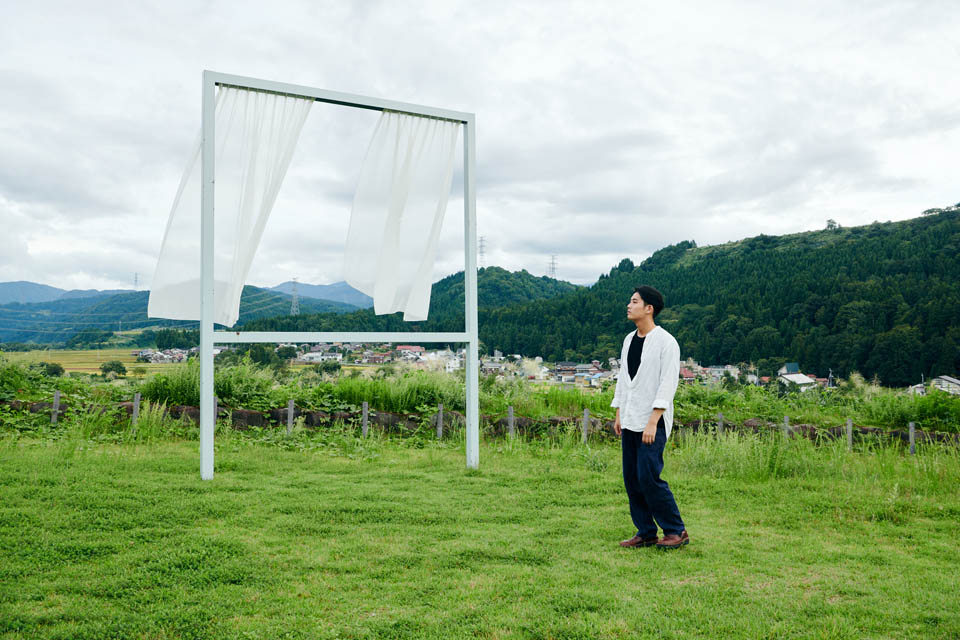
“For Lots of Lost Windows” by Akiko Utsumi (2006)
The landscape you see from window of your room become “yours”. This is a window in order to re-discover the landscpae of Echigo-Tsumari through what one will see through the window. The artist was overwhelmed by the nature when she visited Echigo-Tsumari. She tried to create an artwork that wouldn’t disturb the nature like a flower quetly blooms. The blowing curtain responds to the wind while brings sunlight and breeze into the heart of visitors.
The large white window frame with a piece of cartain standing on the glassland. The landscape of Echigo-Tsumari is framed and you re-discover this place as if you look out from the window of your own room. The last thing waited for him was the land called Echigo-Tsumari itself.
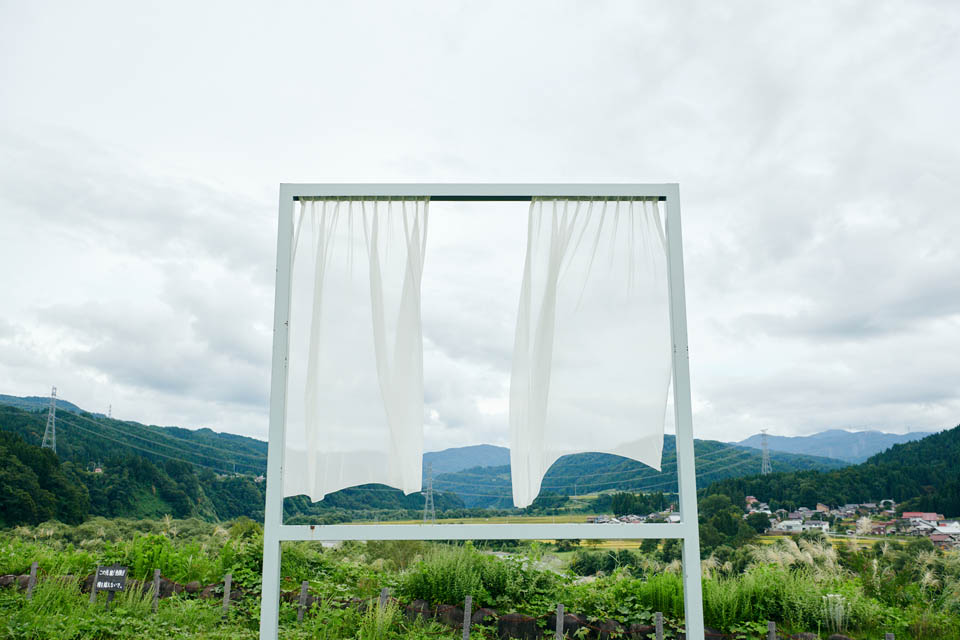
“For Lots of Lost Windows” by Akiko Utsumi
This artwork with a poetic resonance also has memorial wishes to victims of Niigata Chuetsu earthquake happened in 2004. The electric lines we see in the beautiful satoyama landscape sends electricity generated from the hydro power station located in the Shinanogawa River to Tokyo. In other words, this landscape is “relevent” to those who live in the metropolis. Orisaka revisits this journey.
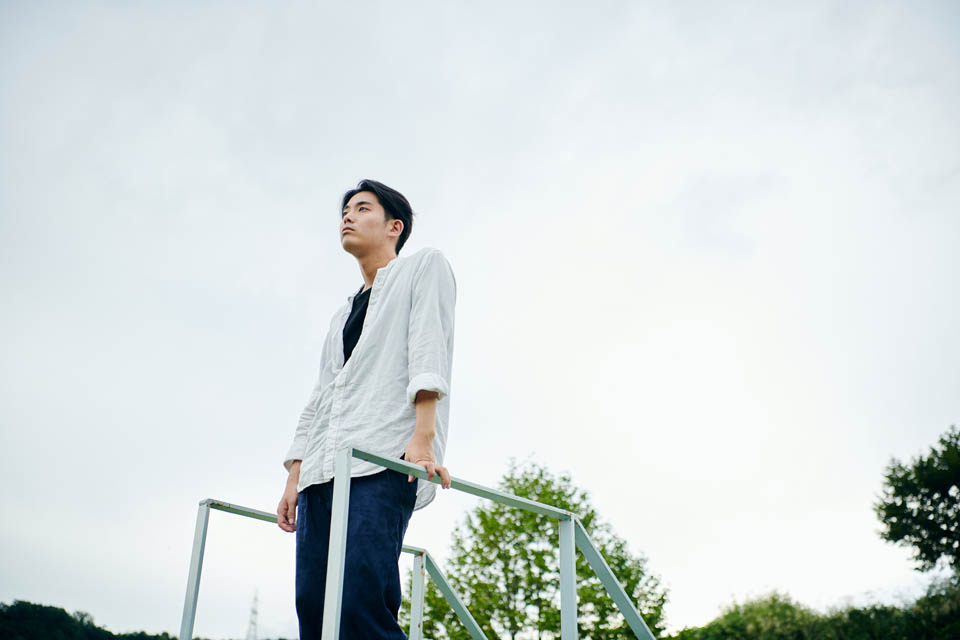
Orisaka:I began to feel liveley“intonations” as I visited artworks, culture and life of this region. Such intonations are distinctively local and physical while also universal at the same time. I doublt whether we would be able to express such intonations if the locality or place-specificity are dissolved. We can trueley share something only if we dig deeper where we stands on.
Through this art festival I grasped the distinctive “intonations” of Echigo-Tsumari. I belive I will be able to reach out to the deep into people’s heart if I look straight at the core through my music and convey those withought thinning such elements.
Orisaka eyes see universal and commonly shared landscape that exists in anyone’s mind which he encounters he explors deeper into the Echigo-Tsumari region. Such landscape must have a power to move every person who visits this place for ETAT.
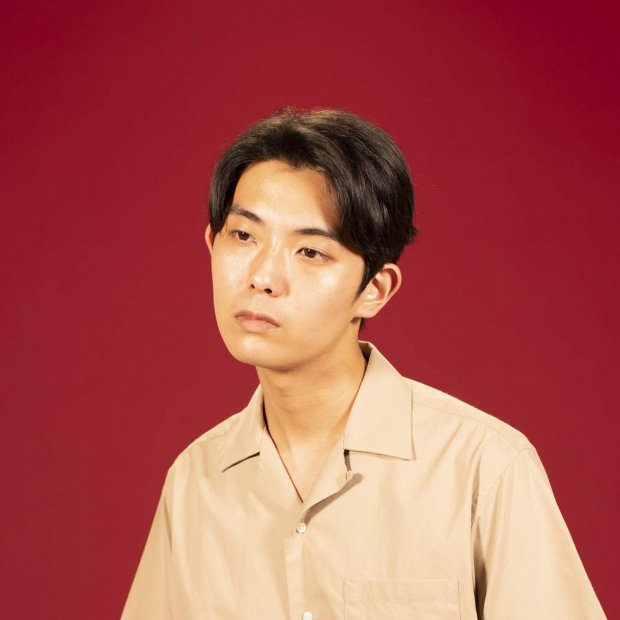
Profile
Yuta Orisaka
A singer song writer, born in the first year of Heisei (1989) in Tottori. After spending his childhood in Russia and Iran, he returned to Japan and lived in Chiba. He started live performance of singing with a guitar from 2013. In addition to his unique vocalism, he is a unique singer who has translated various genre of music he has been influenced by including blues, folk music and jazz into pop music. His music and live performance have been admired by Hikaru Utada, Gontiti, Masafumi Gotoh (ASIAN KUNG-FU GENERATION), Hikaru Ijuin, Shohei Oyamada (ex: andymori), Kyohei Sakaguchi, Saho Terao. The most recent music album, “Heisei” was released in October 2018. He was noted for visiting 23 places across Japan for “gold-coin” live performances as well as participated in various music festivals such as FUJI ROCK FESTIVAL 2018, RISING SUN ROCK FESTIVAL 2018 in EZO, and New Acoustic Camp in 2018.






